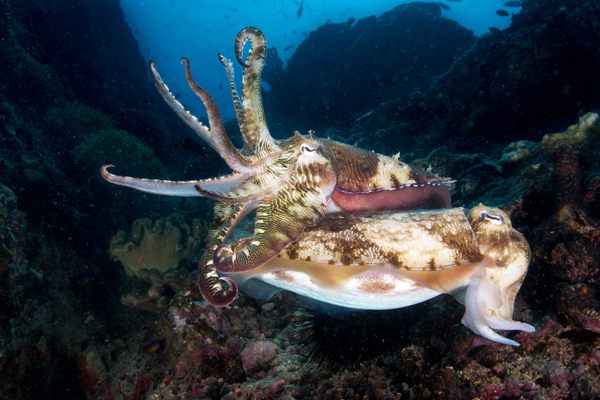Electric Eels Revealed to Make Leaping Attacks, Confirming 200-Year-Old Legend
They are sneakier than you thought.

The sequence above begins on the upper-left and ends on the lower right. (Photo: Kenneth Catania/Vanderbilt University)
Over 200 years ago, the naturalist Alexander von Humboldt was in the Amazon and trying to get his hands on some electric eels for research. At a reservoir infested with the eels, he unsuccessfully tried for three days to catch one. That’s when he enlisted horses. The horses would stampede into the water, irritating the eels and drawing them to the surface.
The eels were so annoyed, in fact, that they attacked, von Humboldt later wrote, jumping out of the water and attaching themselves to the horses’ bellies, electrifying their innards. Two of the horses succumbed to the electricity and drowned.
A dramatic story, to be sure, but was it even true? For over two centuries von Humboldt’s account was never observed in a scientific setting. Maybe he’d gotten a bit carried away. It happens.
But last year, a scientist at Vanderbilt University discovered, accidentally, that electric eels do attack in the way von Humboldt described. For a long time, it was presumed that, rather than fight a bigger and more powerful enemy—like a horse or crocodile—eels would prefer to run. But Kenneth Catania, who published an article revealing his findings this week in Proceedings of the National Academy of Sciences, said that if they feel cornered, they will attack.
Catania made his discovery last year, after using a large metal net to scoop out electric eels he was using as lab specimens. The eels apparently thought the net was a predator—eels generally ignore things that don’t conduct electricity—leapt at the net, and attacked.
The eels also gain power the higher they are out of the water, Catania said, since their attack is less and less diffused by the water itself.
The lesson here being, if you see any electric eels above the surface, it’s probably time to run.



























Follow us on Twitter to get the latest on the world's hidden wonders.
Like us on Facebook to get the latest on the world's hidden wonders.
Follow us on Twitter Like us on Facebook